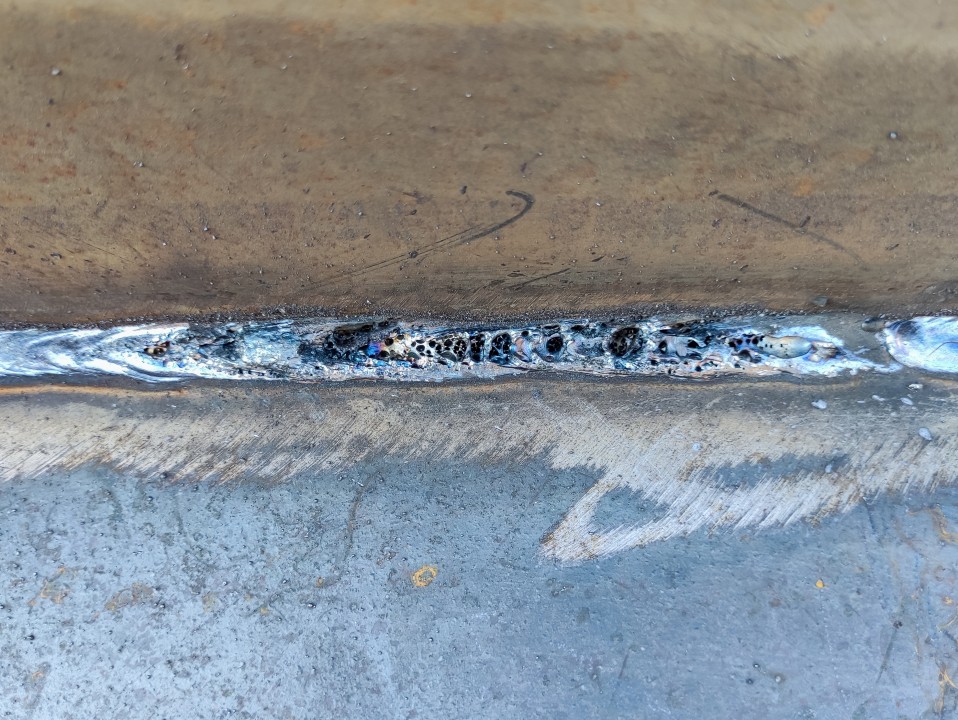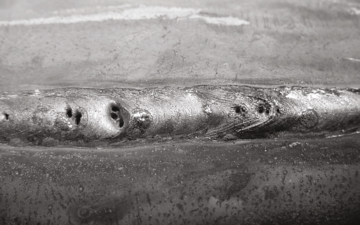What is Porosity in Welding: Understanding Its Causes and Enhancing Your Abilities
Wiki Article
Untangling the Enigma of Porosity in Welding: Tips for Decreasing Issues and Making The Most Of Quality
In the intricate world of welding, porosity continues to be a persistent difficulty that can significantly affect the quality and stability of bonded joints. As we dive right into the midsts of porosity in welding, revealing the secrets to its prevention and control will certainly be critical for specialists seeking to grasp the art of high-grade weldments.Comprehending Porosity in Welding
Porosity in welding, a common concern experienced by welders, refers to the visibility of gas pockets or gaps in the bonded material, which can jeopardize the integrity and quality of the weld. These gas pockets are usually caught throughout the welding process because of different elements such as improper protecting gas, infected base products, or wrong welding parameters. The formation of porosity can weaken the weld, making it vulnerable to splitting and corrosion, eventually causing architectural failings.Comprehending the root creates of porosity is critical for welders to successfully prevent its event. By recognizing the value of preserving proper gas protecting, guaranteeing the tidiness of base products, and enhancing welding settings, welders can considerably reduce the probability of porosity development. Additionally, using techniques like preheating the base material, employing correct welding techniques, and carrying out comprehensive inspections post-welding can even more aid in decreasing porosity flaws. Overall, a detailed understanding of porosity in welding is necessary for welders to create premium and resilient welds.

Usual Reasons For Porosity
When evaluating welding procedures for possible top quality problems, understanding the common sources of porosity is necessary for maintaining weld stability and protecting against structural failures. Porosity, characterized by the existence of dental caries or voids in the weld steel, can dramatically compromise the mechanical buildings of a bonded joint. One common source of porosity is improper securing gas protection. Inadequate securing gas flow prices or incorrect gas mixtures can cause atmospheric contamination, causing porosity development.
In addition, welding at incorrect parameters, such as exceedingly high travel rates or currents, can create too much turbulence in the weld pool, capturing gases and triggering porosity. By addressing these common reasons through correct gas shielding, material preparation, and adherence to optimal welding specifications, welders can lessen porosity and improve the top quality of their welds.
Strategies for Porosity Avoidance
Executing efficient preventive actions is investigate this site vital in minimizing visit this site right here the occurrence of porosity in welding processes. One technique for porosity prevention is making certain appropriate cleaning of the base steel before welding. Impurities such as oil, grease, corrosion, and paint can cause porosity, so thorough cleansing making use of proper solvents or mechanical techniques is necessary.
An additional secret precautionary step is the choice of the best welding consumables. Using high-quality filler products and securing gases that are appropriate for the base metal and welding procedure can considerably decrease the risk of porosity. In addition, keeping correct welding parameters, such as voltage, present, take a trip speed, and gas circulation price, is crucial for porosity prevention. Differing the advised setups can result in inappropriate gas insurance coverage and insufficient fusion, bring about porosity.
Additionally, using appropriate welding techniques, such as preserving a constant traveling rate, electrode angle, and arc length, can assist prevent porosity (What is Porosity). Adequate training of welders to guarantee they follow ideal practices and top quality control procedures is additionally vital in minimizing porosity flaws in welding

Best Practices for Top Quality Welds
One secret practice is keeping proper cleanliness in the welding location. Extensively cleansing the work surface and bordering area prior to welding can assist reduce these issues.An additional ideal method is to thoroughly pick the suitable welding specifications for the certain products being joined. This includes setting the proper voltage, existing, travel speed, and protecting gas circulation rate. Appropriate criterion option ensures ideal weld infiltration, blend, and total quality. Making use of premium welding consumables, such as electrodes and filler steels, can substantially influence the final weld high quality. Spending in costs consumables can cause more powerful, a lot more resilient welds with less flaws. By adhering to these ideal techniques, welders can consistently produce top quality welds that meet industry standards and exceed consumer expectations.
Importance of Porosity Control
Porosity control plays a vital role in guaranteeing the stability and top quality of welding joints. Porosity, identified by the visibility of tooth cavities or spaces within the weld metal, can considerably endanger the mechanical buildings and structural integrity of the weld. Too much porosity deteriorates the weld, making it much more at risk to splitting, rust, and overall failing under operational lots.Effective porosity control is essential for preserving the desired mechanical buildings, such as toughness, ductility, and durability, of the welded joint. What is Porosity. By minimizing porosity, welders can boost the total top quality and integrity of the weld, making sure that it meets the efficiency needs of the intended application
Moreover, porosity use this link control is vital for accomplishing the wanted aesthetic appearance of the weld. Excessive porosity not just compromises the weld but additionally interferes with its visual allure, which can be important in markets where visual appeals are essential. Appropriate porosity control strategies, such as using the correct protecting gas, regulating the welding parameters, and making sure appropriate sanitation of the base products, are essential for generating premium welds with marginal issues.

Conclusion
In final thought, porosity in welding is a typical flaw that can endanger the top quality of the weld. It is essential to control porosity in welding to guarantee the stability and stamina of the last item.Report this wiki page